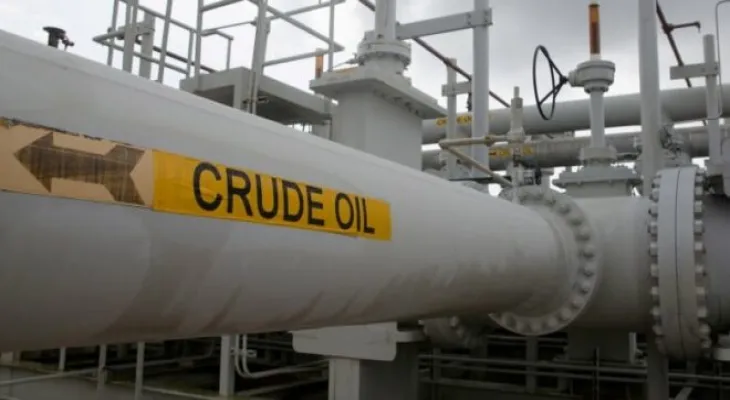Search here
Newspaper
Search here

Arab Canada News
News

Published: October 14, 2022
Oil prices currently range around 90 US dollars per barrel. So why does Canadian oil sands crude go for less than 60 dollars?
The North American benchmark barrel is trading at $90 a barrel currently, but the heavy crude coming from Canadian oil is down by $30 due to a perfect storm of supply and demand imbalances.
The blend known as West Texas Intermediate (WTI) was heading toward $87 a barrel on Thursday.
That is below recent highs, but still much more than the price offered for each barrel of crude from Canadian oil sands, a thick, tar-like, and "acidic" type of crude known as Western Canada Select (WCS).
WCS was bringing in just over $53 a barrel on Thursday, the lowest level since Russian President Vladimir Putin’s invasion of Ukraine, which pushed oil prices to their highest levels in years due to fears of a wider war breaking out, and prompted countries to seek to replace Russian crude under sanctions.
Russian crude is cheaper by more than $34 a barrel than West Texas Intermediate crude, the largest gap between the two blends since 2018. Western Canada Select always sells at a discount to WTI, because not all refineries are equipped to handle it. It is generally considered low-quality due to its high sulfur content, making it an "acidic" blend, compared to a "sweeter" blend like West Texas Intermediate crude. This means refineries must be specifically calibrated to process it, which lowers WCS’s price to offset that extra cost.
Then there’s the cost of shipping it from northern Alberta to refineries in the United States, which adds even under ideal conditions another discount of $5 to $10 per barrel. Oil is priced in US dollars because like many commodities including gold, the market is global. Pipeline capacity is usually blamed anytime the gap between oil blends is as wide as it is now, but experts say that is not the case this time. Instead, there are fewer buyers for WCS because many of the refineries that process it are currently offline. And there is a drop in demand for oil overall due to fears of an economic recession.
Vijay Muralidharan, director of R Cube Economic Consulting, said it is a perfect storm of reasons causing the oil price collapse in Canada: "Demand is falling, and when demand falls, the spread widens."
In an interview. Fall is usually the season when refineries shut down for maintenance, but there are more than usual offline right now due to unplanned outages. A 160,000 barrel-per-day refinery in Toledo, Ohio was shut down due to a fire in August, and while it reopened last month, it has not yet returned to full capacity. A larger one in Whiting, Indiana, near Chicago, usually processes 430,000 barrels of oil per day, but it also suffered a fire and has not returned to normal yet.
Muralidharan said, "A lot of heavy Canadian crude goes to that refinery, and if it is out, that’s a big hit to refining and utilities."
So Canadian crude, usually refined somewhere near Chicago, has to travel further afield to be processed. Rory Johnston, founder of the Commodity Context newsletter, said some of it usually moves by river, but that route is also part of the problem right now due to unusually low water levels on the Mississippi River.
"They usually do a lot of offloading of some of these products [but] the Mississippi River is severely low, so there are concerns about bottlenecks and shipping there too," he said in an interview. The US Coast Guard said at least six barges on the Mississippi River stopped last week, causing shipping delays and concerns about further disruptions.
One effect of this bottleneck is that refineries that rely on the river to bring crude oil in and ship product out are temporarily losing their appetite for Canadian oil.
Oil analyst Matt Smith from Kpler told CBC News in an email: "The low levels of the Mississippi River appear to be impacting WCS prices due to the supply disruptions it causes." "Refineries seem forced to scale back activity because they are unable to move products."
"This reduced demand for Canadian crude spreads from Chicago to every part of the complex oil supply chain. Johnston said, "We are already seeing the weakness extending all the way to the US Gulf Coast."
There is more than enough pipeline capacity to get oil wherever it needs to go right now. But even once these WCS barrels reach many refineries around the US Gulf Coast, they face their next issue:
The Biden administration has been releasing millions of barrels from the country’s Strategic Petroleum Reserve, to offset the disruption caused since Putin’s invasion.
WCS barrels move in the same refinery hub as those US barrels, trying to find a buyer. And all this crude has started to pile up. Data from the Energy Information Administration showed on Wednesday that the total number of barrels of oil stored in the US rose by about 10 million barrels last week. That means demand is waning, an overall sign of an economic slowdown - meaning oil prices will face a tough uphill battle even under ideal conditions.
Johnston said, "The good news here is that this doesn’t appear to be tied to insufficient pipeline capacity for Canadian oil. The bad news is it is something almost completely outside our control right now." "It doesn’t seem to be getting better yet. So there is an open question about how bad this is."
Edited by: Yusra Bamtaraf
Comments